The Financials of Profitable Small-Scale Farming
From getting on YouTube to working in your neighbor’s yard, there are some creative ways to make money as a small farm.
The Financials of Profitable Small-Scale Farming
From getting on YouTube to working in your neighbor’s yard, there are some creative ways to make money as a small farm.
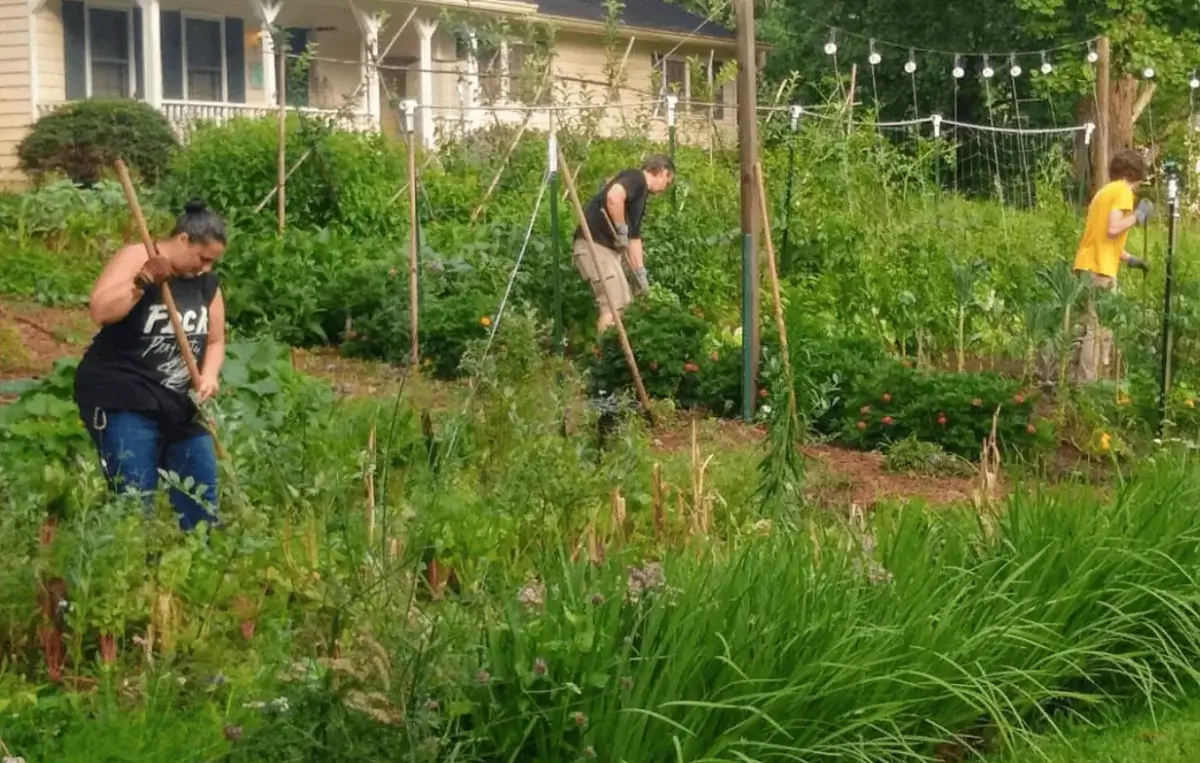
Planting a garden in a neighbor's yard. Photography courtesy of Trefoil Gardens and Rob Miller.
Just a Few Acres Farm in Lansing, NY has nearly 500,000 subscribers on YouTube, where seventh-generation farmer Pete Larson posts videos with titles like “The basics of cutting hay” and “Playing in the Dirt with Pregnant Pigs”. The videos cover everything from dealing with his cattle and daily chores to advice for aspiring small farmers hoping to avoid burnout—many of whom leave comments thanking Larson for the tips.
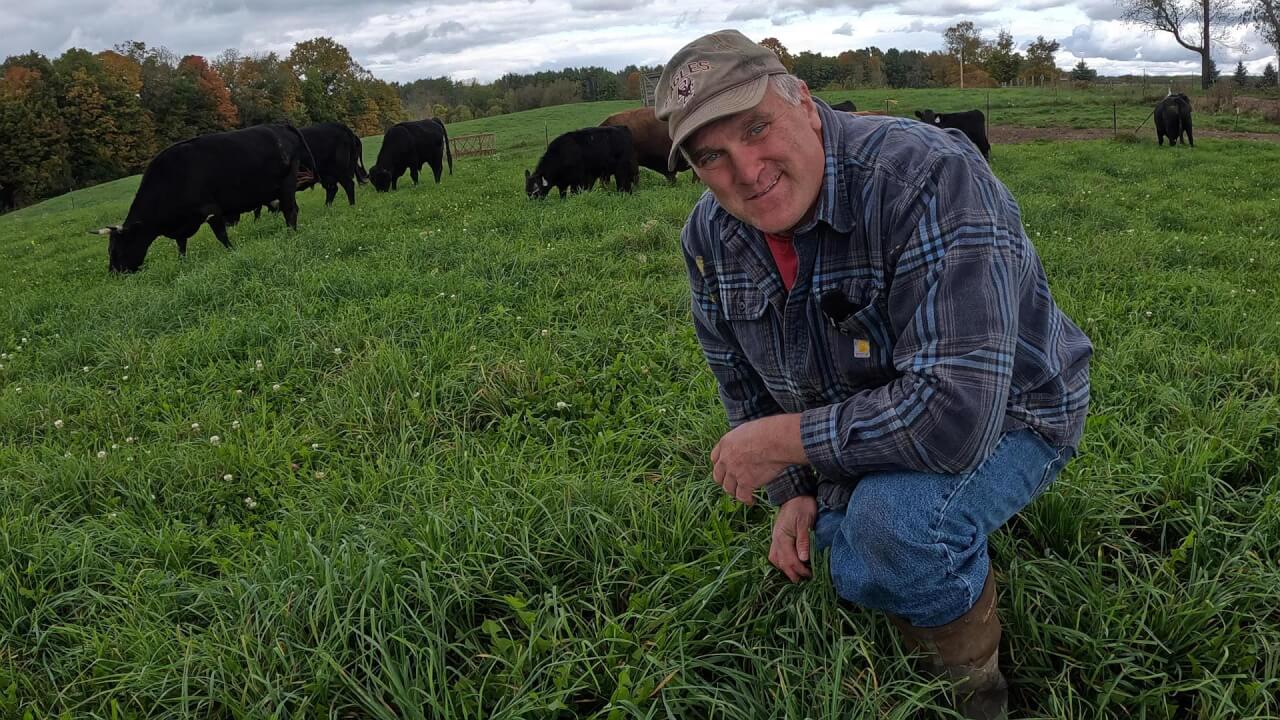
The tips are especially helpful for folks hoping to make a go of farming on smaller plots of land. Given the challenges in an industry dominated by factory farms, such as slim profit margins and little control over pricing and markets, between 52 percent and 79 percent of small family farms are at high financial risk. More than half of small farmers also have to work a second job to make ends meet.
“We only have 45 acres, which is a really small farm around here,” says Larson. “Conventional wisdom was [that] you could never make a living off that small amount of land, because the farmers around here are all commodity farmers.”
But, some small-scale farmers like Larson have been able to make their operations profitable with creative techniques such as monetizing their social media presence and carving out interesting, competitive niches.
READ MORE
Have questions about how to transition away from factory farming? We have answers!
One way Larson did this is by finding breeds with great marketing stories behind them, such as Dexter cattle. Brought back from near extinction by homesteaders who wanted a dual purpose for beef and dairy, this Irish heritage breed works well for Larson because of their smaller size and good beef quality when raised on grass without grain.
“You want to be able to tell a story to customers that they can buy into,” says Larson about his choice cattle breeds. “You need to have a marketing hat on as much as anything else.”
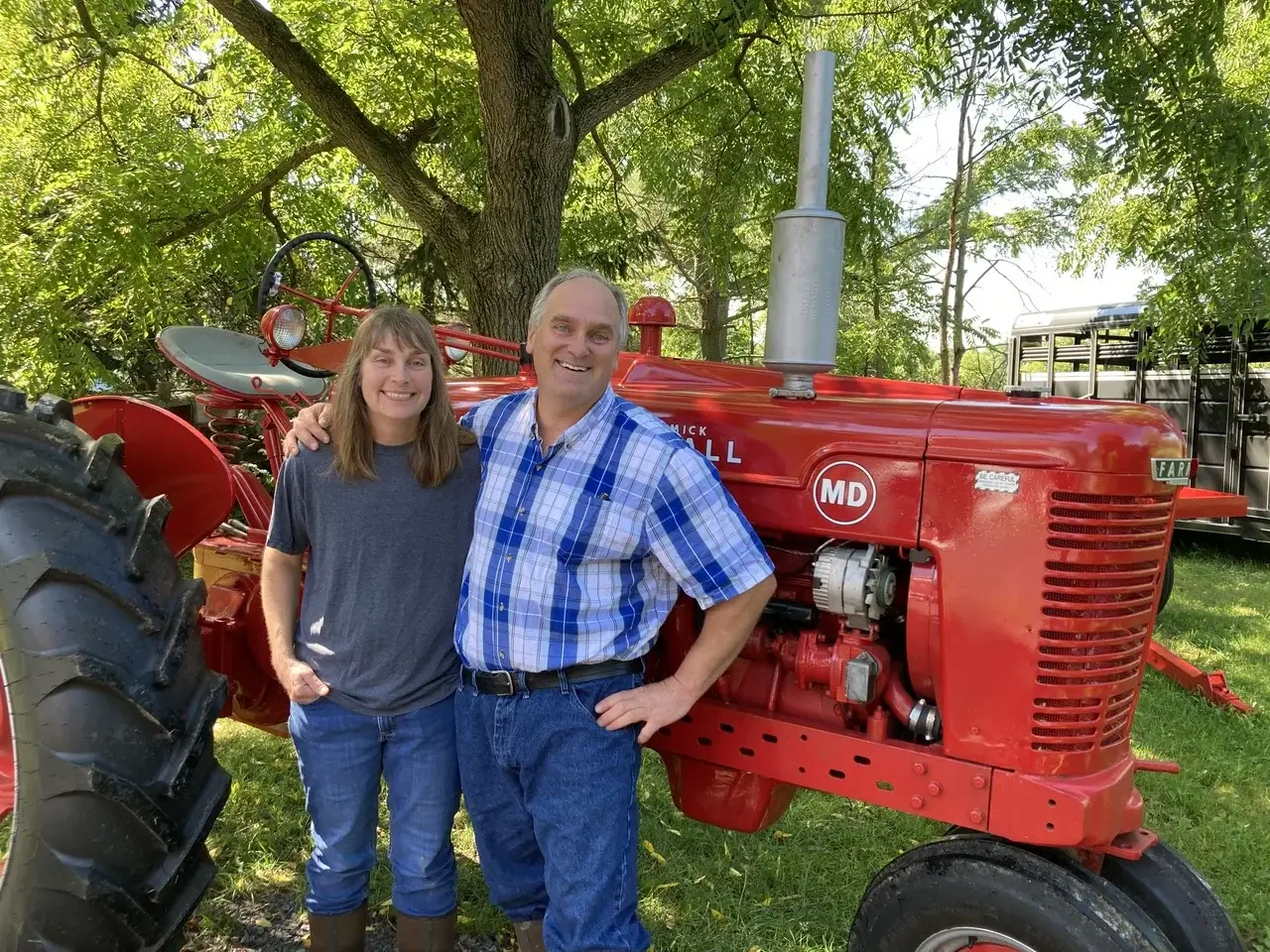
Eventually, says Larson, the farm began to make enough money for the family to take home a profit. Then, about seven years into the endeavor, Larson says he had another idea: monetizing Just A Few Acres’ social media to help support their small livestock farm.
“It’s enabled us to … gradually, taper down the numbers of animals that we raise,” says Larson. “And it’s allowed me to say, ‘well, if I’d like to retire before I die, I can do that now.’ It’s given us breathing room.”
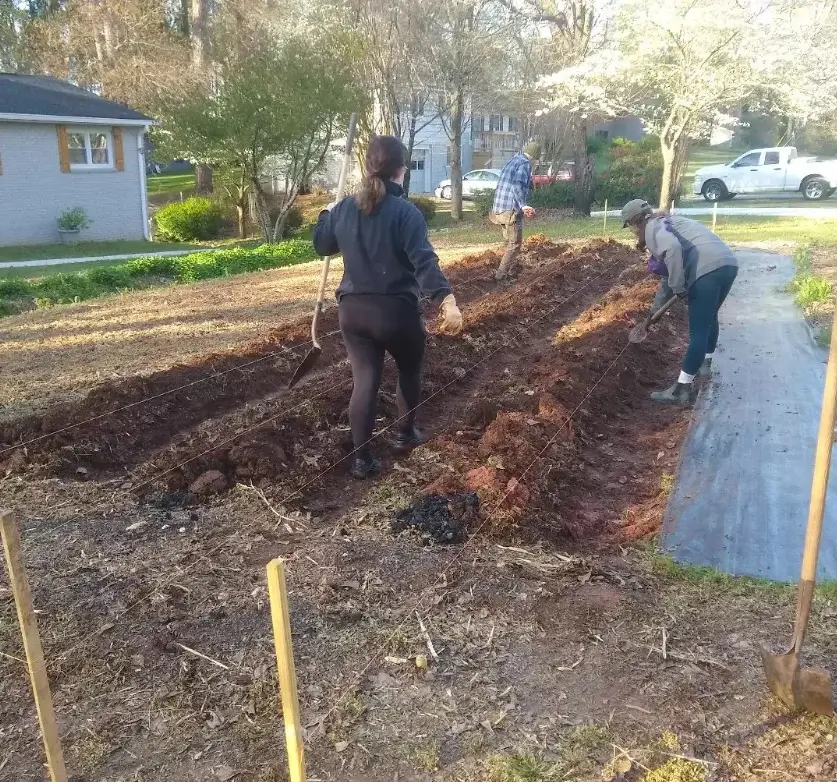
Likewise, across the country, Rob Miller and Melanie Jones had to think way outside the box—and their own fence—in order to acquire enough land to farm in Woodstock, GA. As owners and operators of Trefoil Gardens, they adapted a “multi-locational” model that has grown into a neighborhood agricultural cooperative, and it relies on the partnership of their neighbors.
Through a program called SPIN-Farming, which stands for small plot intensive and teaches aspiring farmers to take a systematic approach to backyard-scale growing, Miller says he was able to connect with a farmer who already had a template for a yard-sharing contract. He brought the contract over to his neighbor, and they broke ground on their first neighboring plot on July 4, 2016.
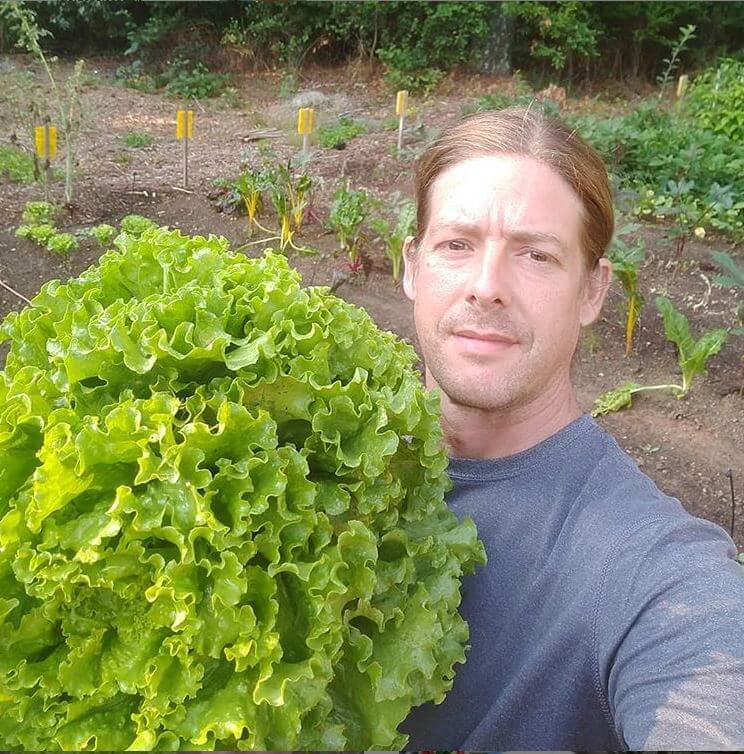
Now, with plots spread across the yards of six of their neighbors, and a few others a two-minute drive from their suburban home, they currently have 15,000 square feet under cultivation. Since then, Trefoil has been able to take its yard and neighborhood to new levels of productivity. The SPIN program has also helped thousands of other farmers use this multi-locational approach to farming on limited space.
But, Miller says it took him a long time to stop burning himself out with the hard work, and to get to a sustainable mindset.
“We’re a mission-driven company, and I know a lot of a lot of people in our space are and so, for us, it’s not so much about money, but at the same time, we’ve got to earn a living. This thing has to be financially sustainable,” says Miller. “It’s been a big transition to move from that solely mission-based focus… you can only do that for so long before you just burn yourself out.”
Given the yard-sized scale of the operation, they have had to really look at which crops have outsized value for profitability, and which are too time-consuming or fickle to rely on in such a limited space. Miller says Trefoil has recently pivoted toward perennial instead of annual crops because they are more manageable and save time.
“We’ve also really dialed in to floral and mushrooms, and then also herbal products, botanical products,” says Miller. “It’s a joke, but it’s not really, that we grow food so that we can get into our farmers markets, and then we grow flowers so that we can afford to grow the food that we bring to the farmers market.”
LEARN MORE
What is a conservation easement?
Trefoil has also had to look at non-traditional methods of selling, because growing on spec with such little land became not only impossible but also incredibly stressful. So, Trefoil took on a community-supported agriculture (CSA) food box subscription model with a short subscription period allowing them to pivot based on what was growing well.
Now, having been profitable for the last three years and selling 25 food boxes at the peak of this year, they’ve also found creative ways to cut costs as compared to a traditional agricultural plot of land.

“We’re in an older neighborhood and so everybody’s on septic systems, so there’s no sewer,” says Miller. “The water is pretty inexpensive for our neighborhood, and that’s really important.”
For many things, though, Miller says they rely on their relationships and community. “I wake up every morning fully indebted to everyone around me, and it’s the most freeing thing in the world. And it just sounds counterintuitive, but it’s true,” he says.
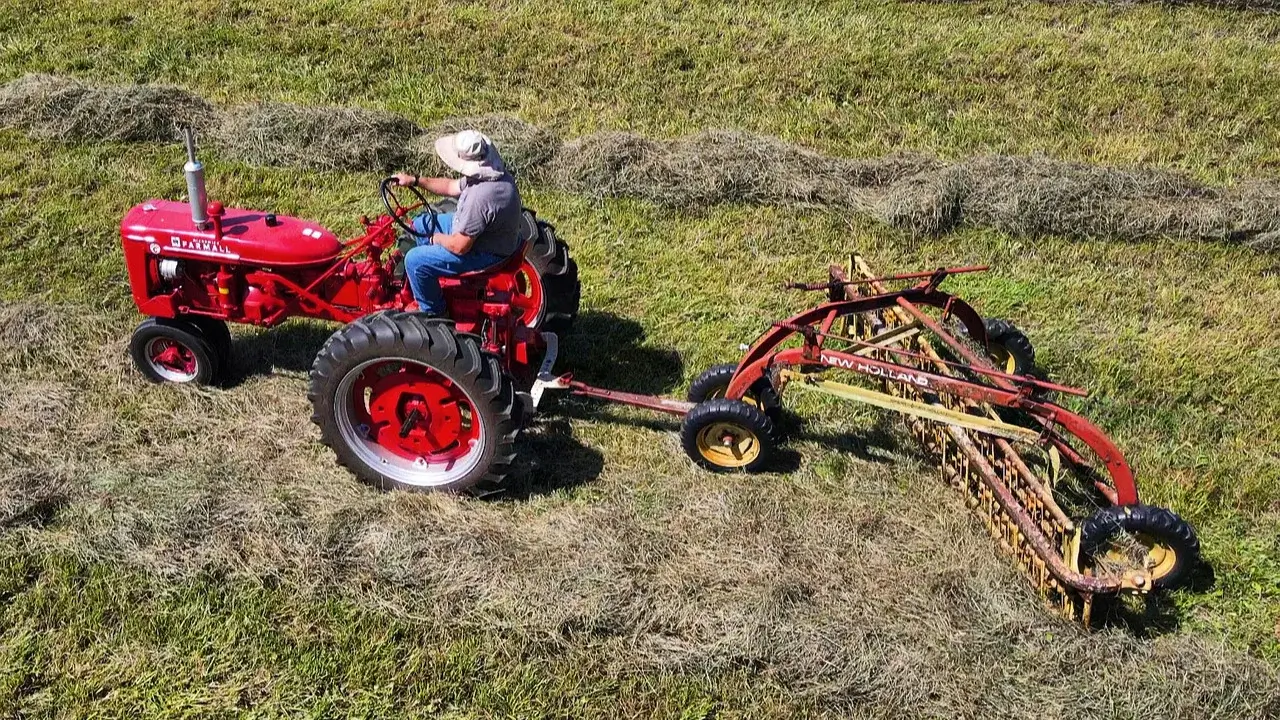
While Larson has also been successful by building up his community, albeit online, he cautions against expecting the farm to be profitable from the start, and he encourages aspiring small farmers to have some kind of a safety net, be it savings or part-time work off the farm.
“You have to have some kind of financial security to start out, because … you don’t have any income from the farm on day one,” says Lason, explaining that he and his wife had some savings that they lived off in a “very modest way” for a few years.
“When we sold our first products at market, everything that came back, the money that came back in stayed on the farm side, and we used that to reinvest and gradually, bootstrap ourselves and grow the size of the farm,” says Larson. Despite land becoming increasingly expensive for aspiring small farmers, a little creativity can still make the business viable.
Follow us
This work is licensed under a Creative Commons Attribution-NoDerivatives 4.0 International License.
Want to republish a Modern Farmer story?
We are happy for Modern Farmer stories to be shared, and encourage you to republish our articles for your audience. When doing so, we ask that you follow these guidelines:
Please credit us and our writers
For the author byline, please use “Author Name, Modern Farmer.” At the top of our stories, if on the web, please include this text and link: “This story was originally published by Modern Farmer.”
Please make sure to include a link back to either our home page or the article URL.
At the bottom of the story, please include the following text:
“Modern Farmer is a nonprofit initiative dedicated to raising awareness and catalyzing action at the intersection of food, agriculture, and society. Read more at <link>Modern Farmer</link>.”
Use our widget
We’d like to be able to track our stories, so we ask that if you republish our content, you do so using our widget (located on the left hand side of the article). The HTML code has a built-in tracker that tells us the data and domain where the story was published, as well as view counts.
Check the image requirements
It’s your responsibility to confirm you're licensed to republish images in our articles. Some images, such as those from commercial providers, don't allow their images to be republished without permission or payment. Copyright terms are generally listed in the image caption and attribution. You are welcome to omit our images or substitute with your own. Charts and interactive graphics follow the same rules.
Don’t change too much. Or, ask us first.
Articles must be republished in their entirety. It’s okay to change references to time (“today” to “yesterday”) or location (“Iowa City, IA” to “here”). But please keep everything else the same.
If you feel strongly that a more material edit needs to be made, get in touch with us at [email protected]. We’re happy to discuss it with the original author, but we must have prior approval for changes before publication.
Special cases
Extracts. You may run the first few lines or paragraphs of the article and then say: “Read the full article at Modern Farmer” with a link back to the original article.
Quotes. You may quote authors provided you include a link back to the article URL.
Translations. These require writer approval. To inquire about translation of a Modern Farmer article, contact us at [email protected]
Signed consent / copyright release forms. These are not required, provided you are following these guidelines.
Print. Articles can be republished in print under these same rules, with the exception that you do not need to include the links.
Tag us
When sharing the story on social media, please tag us using the following: - Twitter (@ModFarm) - Facebook (@ModernFarmerMedia) - Instagram (@modfarm)
Use our content respectfully
Modern Farmer is a nonprofit and as such we share our content for free and in good faith in order to reach new audiences. Respectfully,
No selling ads against our stories. It’s okay to put our stories on pages with ads.
Don’t republish our material wholesale, or automatically; you need to select stories to be republished individually.
You have no rights to sell, license, syndicate, or otherwise represent yourself as the authorized owner of our material to any third parties. This means that you cannot actively publish or submit our work for syndication to third party platforms or apps like Apple News or Google News. We understand that publishers cannot fully control when certain third parties automatically summarize or crawl content from publishers’ own sites.
Keep in touch
We want to hear from you if you love Modern Farmer content, have a collaboration idea, or anything else to share. As a nonprofit outlet, we work in service of our community and are always open to comments, feedback, and ideas. Contact us at [email protected].by Leah Borts-Kuperman, Modern Farmer
November 13, 2024
Modern Farmer Weekly
Solutions Hub
Innovations, ideas and inspiration. Actionable solutions for a resilient food system.
ExploreExplore other topics
Share With Us
We want to hear from Modern Farmer readers who have thoughtful commentary, actionable solutions, or helpful ideas to share.
SubmitNecessary cookies are absolutely essential for the website to function properly. This category only includes cookies that ensures basic functionalities and security features of the website. These cookies do not store any personal information.
Any cookies that may not be particularly necessary for the website to function and are used specifically to collect user personal data via analytics, ads, other embedded contents are termed as non-necessary cookies.
Bottom line is owning the property, no mortgage. Pete farms on multiple generation land. ZERO debt. That’s how you do it.That leaves him room to restore and maintain vintage red tractors.
If you don’t inherit your land, you need to have worked and saved a lot from a day job before you can buy a farm. No debt is the key.
Pete is awesome!
Great to see a few acres farm here
great to see such a farm